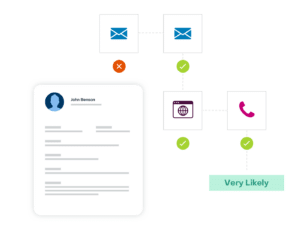How to Drive Growth Through CX
Customer-centricity will serve as a top growth engine in a post-pandemic world riddled with shortages, delays, disruptions, and closures. Businesses revisit their strategic models in an age where customer loyalty is fundamental in the pursuit of profit.
With research from Qualtrics XM showing that investing in CX initiatives can increase revenue by 70% within 36 months, businesses must start to see customer service as a profit center. Here are five key steps to set organizations on the right path towards greater CX that positively impacts the bottom line.
1. Tailor Your Approach
Customers want recognition and to receive accurate recommendations that are relevant to their previous purchases and searches. Personalization is essential in both securing new sales and upselling. Studies have shown that 80% of consumers are more likely to purchase when brands offer personalized experiences.

These findings show that customers still desire the personal relationships of the offline, face-to-face world. Businesses need to respond and re-create these experiences in the online world.
2. Tap into the Desire for Convenience
According to PwC research, 43% of all consumers would pay more for greater convenience; and 42% would pay more for a friendly, welcoming experience, which are both by-products of creating a customized customer journey.
Maximizing the convenience offered to consumers is a powerful driver of CX. Once cutting-edge and hardly affordable, the technology used to optimize it has become mainstream and enables businesses to capitalize on this expectation of easy interactions at scale.
Delivering the right information at the right time on the right platform may simply make the difference between a flourishing and stagnating business.
3. Improve the Accuracy of Predictions
For a uniquely personal experience, companies must evaluate all the intersection points of a customer’s journey. You must build a rich history that enables you to predict future buying trends and make relevant suggestions. This involves studying a potential customer’s first experience on the company website, analyzing browsing history and tendencies, and reviewing the purchasing experience, such as placing and receiving orders.
By combining entire correspondence history, including emails, texts, live chats, and simply anything and everything that customers have experienced when interacting with any part of the business, a thorough understanding of the customer’s needs, preferences, and most plausible future behavior can be surfaced.
4. Let Technology Do the Work
AI provides organizations with opportunities to collect vast amounts of data, making it more accessible and actionable to all business users. Gone are the days of silos and scattered data, too big or challenging to interpret.

AI instruments take care of the manual work of sorting, categorizing, observing, and deciding. Customer-facing teams can now focus on strategic goals rather than tactical, time-consuming tasks like pulling customer lists. In Gartner’s September 2020 survey of business and IT professionals, 24% said their organization invested more into AI since the start of the COVID-19 pandemic—showing huge progress within just six months. As the AI and automation uptake accelerate, the race to keep up with competitors is on.
5. Change with Customer Feedback
A crucial part of CX’s success is listening and implementing customer feedback into action plans to improve service. Gartner found that although 95% of companies have collected feedback from their customers for years, only 10% use these suggestions to change their processes and improve CX.
Companies need to merge the desires of their customers with the overall business strategy. You can achieve this by consolidating direct, indirect, and inferred customer feedback from numerous intersection channels, resolving customer concerns in real-time. Knowledge-sharing programs can effectively remove departmental barriers and improve customer-facing processes if various teams and business areas interact with customers.
Closing Thoughts
As the correlation between customer loyalty and profit continues to increase, companies that invest in tactics and technologies which bring them closer to their customers are more likely to unlock steady revenue growth. Although personalization is vital, companies must be willing to listen to customer feedback and keep them satisfied or risk losing business.
If you want to learn more about key points you should focus on to improve your customer experience, we highly recommend these resources:
- High-Definition CX: Driving Memorable Customer Experiences with Technology – Learn about critical business technologies, what they do, and how they can further enable your organization to provide exceptional customer experiences.
- High-Definition CX: Strategically Amaze Your Customers with Effortless Experiences – Use this guide to jumpstart your customer experience strategy and help create experiences that have lasting impacts.
- High-Definition CX: Building for Momentum—Customer Experience in Practice – This guide will teach you how to optimize your new and existing processes and drive your customer experience to the next level.



